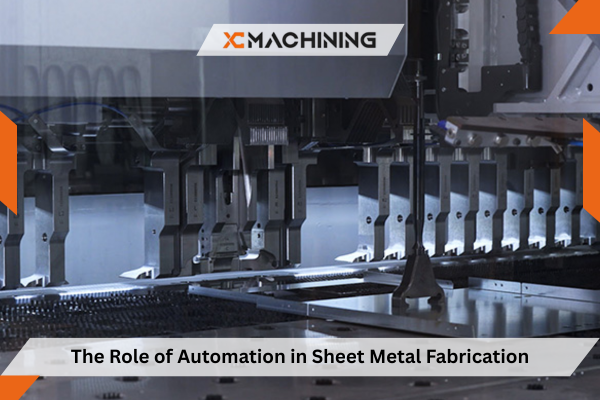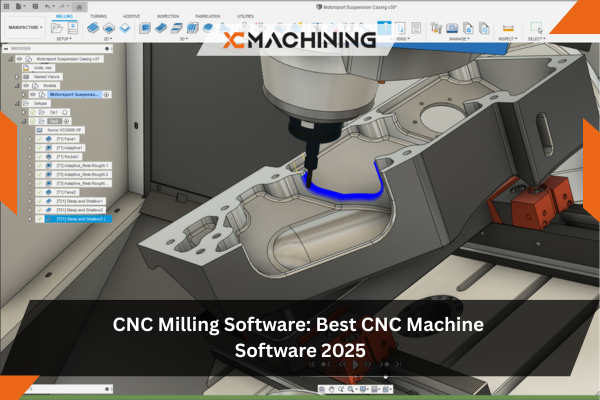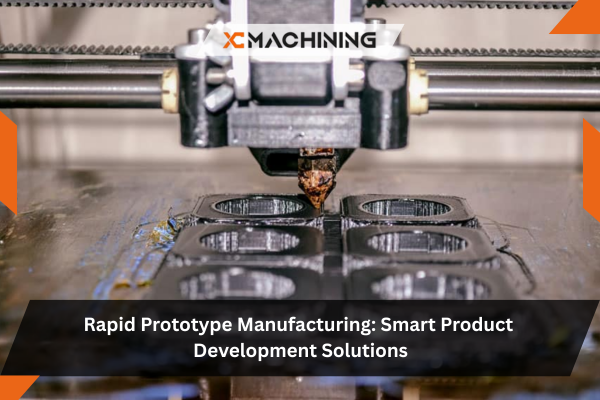What This Guide Covers
Automation is fundamentally transforming sheet metal fabrication from a labor-intensive craft into a high-tech manufacturing process. After 14 years working with precision sheet metal fabrication companies implementing automation technologies, I’ve witnessed firsthand how the right automation investments can double productivity while improving quality and reducing costs.
In this comprehensive guide:
- Current state of automation in sheet metal fabrication
- Key technologies reshaping the industry
- Real benefits and ROI from automation
- Challenges and considerations for implementation
- How to evaluate automation for your operation
- Future trends in automated sheet metal manufacturing
Whether you’re running custom sheet metal fabrication services, managing a precision sheet metal fabrication company, or searching for sheet metal fabrication near me, understanding automation’s role helps you make informed decisions about your manufacturing strategy and competitive positioning.
Índice
The Evolution of Sheet Metal Fabrication Automation
Last year, a precision sheet metal fabrication manufacturer came to me frustrated. Their skilled operators were overwhelmed with work, quality was inconsistent, and they were turning away customers because they couldn’t scale production. They assumed automation was only for massive companies with unlimited budgets. I showed them a fiber laser cutting system with automated material handling that could fit their 8,000 sq ft shop and pay for itself in 18 months through labor savings and increased throughput.
Today, that fabricación de chapa metálica company runs lights-out production on second shift, producing parts while their skilled workers are home. Their throughput increased 140%, scrap dropped from 4.8% to 0.9%, and they’re hiring designers and engineers instead of struggling to find operators. That’s the power of smart automation.
The sheet metal fabrication industry has evolved dramatically:
Traditional fabrication (1990s-2000s):
- Manual machine operation
- Paper blueprints and hand measurements
- Operator skill determines quality
- Limited production capacity
- High variability
Modern automated fabrication (2020s):
- CNC-controlled equipment
- Digital workflows and CAD/CAM integration
- Consistent, repeatable processes
- Scalable production capacity
- Predictable, high-quality output
Key Automation Technologies in Sheet Metal Fabrication
Based on implementing automation across dozens of fabricación de chapa a medida operations, these technologies deliver the biggest impact:
1. Automated Laser and Plasma Cutting
Technology overview: Modern fiber laser systems cut sheet metal with incredible speed and precision, controlled entirely by CNC programming.
Automation features:
- Automatic nozzle changing
- Adaptive cutting head positioning
- Real-time cut quality monitoring
- Automatic focus adjustment
- Integrated CAD/CAM programming
Real impact: A precision sheet metal fabrication company I worked with upgraded from a CO2 laser to an automated fiber laser. Cutting speed increased 300% on thin materials, operating costs dropped 60% (lower power consumption, no laser gas), and quality improved dramatically with automatic process monitoring.
Performance data:
- Mild steel cutting speed: 800-1,200 inches/minute (3x faster than older technology)
- Unattended operation capability: 8-16 hours depending on material handling
- Typical ROI: 2-4 years for high-volume shops

2. Robotic Press Brake Operation
Technology overview: Robotic systems handle parts during press brake bending operations, eliminating manual material handling and ensuring consistent bend angles.
Automation capabilities:
- Part positioning and orientation
- Automatic tool changing
- Multi-axis part manipulation
- Angle measurement and correction
- Collaborative operation with human operators
Real application: I helped a custom sheet metal fabrication near me facility integrate a cobot (collaborative robot) with their press brake. The robot handles repetitive bending operations while the operator programs and monitors. Production increased 85% while reducing operator fatigue and improving bend consistency to ±0.5 degrees.
Benefits documented:
- 60-80% faster bending operations
- Consistent bend angles (eliminates operator variation)
- Reduced workplace injuries
- Enables lights-out production
3. Automated Material Handling Systems
Technology overview: Automated loading/unloading systems move sheet material and finished parts without manual intervention.
Common systems:
Tower storage systems:
- Automated sheet retrieval from vertical storage
- Capacity: 20-100 sheets depending on size
- Integration with cutting equipment
- Reduces floor space requirements by 70%
Robotic part sorting:
- Automatically separates cut parts
- Sorts by part number or customer
- Stacks or bins completed parts
- Eliminates manual sorting labor
Real example: A sheet metal fabrication company serving multiple industries implemented an automated tower system feeding their laser cutter. Previously, one operator spent 3 hours daily loading material. Now that operator programs jobs and performs quality checks while the tower automatically feeds material. The shop added 24 additional production hours weekly without adding labor.
4. Automated Welding Systems
Technology overview: Robotic welding provides consistent, repeatable welds at speeds human welders can’t match.
Key capabilities:
- Precise torch positioning
- Consistent travel speed and arc length
- Programmable weld parameters
- Multi-pass welding automation
- Quality monitoring sensors
Performance comparison:
| Factor | Manual Welding | Robotic Welding | Improvement |
|---|---|---|---|
| Weld Speed | 12-18 inches/minute | 40-60 inches/minute | 200-300% faster |
| Arc-On Time | 20-30% | 80-90% | 3-4x more productive |
| Coherencia | Operator dependent | ±0.001″ repeatability | Extremely consistent |
| Rework Rate | 5-10% | 0.5-2% | 75-90% reduction |
Real impact: A precision sheet metal fabrication manufacturer producing enclosures implemented robotic welding for their repetitive seam welds. Weld quality improved dramatically (x-ray inspection pass rate went from 92% to 99.7%), and they could run welding operations on second shift unattended.
5. Automated Deburring and Finishing
Technology overview: Automated systems remove burrs, polish edges, and prepare surfaces without manual labor.
Technologies:
- Robotic grinding: Programmable paths for consistent edge finishing
- Automated deburring machines: Pass-through systems for high-volume parts
- Vibratory finishing: Batch processing for small parts
- Laser deburring: Non-contact edge finishing
Benefit: Deburring is tedious, time-consuming work. Automation eliminates bottlenecks while improving consistency and reducing labor costs by 70-85%.
6. Automated Quality Inspection
Technology overview: Vision systems and coordinate measuring machines (CMM) automatically verify dimensional accuracy.
Capabilities:
- High-speed dimensional inspection
- 100% inspection rather than sampling
- Automatic documentation
- Real-time process feedback
- Defect detection and classification
Real application: A custom sheet metal fabrication company integrated automated vision inspection inline with their laser cutting. The system checks every part automatically, rejecting defective pieces before they proceed to bending. This eliminated downstream rework that was costing $35,000 annually.
Benefits of Automation in Sheet Metal Fabrication
After implementing automation across diverse operations, these benefits consistently appear:
Aumento de la productividad
Typical improvements:
- 50-150% throughput increase on automated operations
- 80-90% machine utilization vs. 35-50% manual operation
- Lights-out manufacturing capability (unmanned shifts)
- Faster job changeovers with digital tooling
Real data: A precision sheet metal fabrication company I worked with tracked productivity before and after automation:
- Before: 850 parts per week (single shift)
- After: 2,400 parts per week (automated second shift)
- Improvement: 182% increase with same labor headcount
Improved Quality and Consistency
Quality benefits:
- Eliminates operator-to-operator variation
- Consistent part dimensions within ±0.001″
- Reduced scrap rates (typically 50-80% reduction)
- Better weld quality and appearance
- Fewer customer returns
Example: Manual brake press operators at one shop produced parts with bend angle variation of ±2 degrees. After robotic automation, variation dropped to ±0.3 degrees—consistently within tolerance every time.
Labor Cost Optimization
Not about eliminating workers—it’s about optimizing:
- Reduce repetitive, low-value tasks
- Redirect workers to programming, setup, and quality control
- Address skilled labor shortages
- Improve workplace safety
- Enable scaling without proportional labor increases
Real outcome: The precision sheet metal fabrication companies that succeed with automation redeploy workers to higher-value activities like engineering, process improvement, and customer service rather than eliminating jobs.
Plazos de entrega más cortos
Speed improvements:
- Automated systems run 24/7 (vs. 8-16 hours/day manual)
- Faster setup times with digital tooling libraries
- Parallel processing (one machine loads while another cuts)
- Reduced queue times from higher throughput
Customer impact: Faster lead times are a competitive advantage. Custom sheet metal fabrication near me searches often prioritize speed—automation helps you win that business.
Better ROI on Equipment
Utilization improvements:
- Manual operation: 35-50% machine utilization
- Semi-automated: 60-75% utilization
- Fully automated: 80-90% utilization
Financial impact: A $250,000 laser cutter at 40% utilization produces $100,000 annual value. At 85% utilization, it produces $212,500 annual value—the same equipment with better return through automation.
Challenges and Considerations
Automation isn’t without challenges. Here’s what I’ve learned from implementations:
Initial Investment Requirements
Cost reality:
| Nivel de automatización | Investment Range | Typical ROI Period |
|---|---|---|
| Basic (CNC control, minimal automation) | $75,000-$200,000 | 3-5 years |
| Moderado (Material handling, robotic loading) | $200,000-$500,000 | 2-4 years |
| Avanzado (Lights-out capability, full integration) | $500,000-$2,000,000+ | 18 months-3 years |
Consideration: Many precision sheet metal fabrication manufacturers start with one automated cell, prove ROI, then expand. You don’t need to automate everything simultaneously.
Technical Expertise Requirements
Skills needed:
- CNC programming knowledge
- CAD/CAM software proficiency
- Robot programming capabilities
- Maintenance and troubleshooting skills
- Systems integration understanding
Solution: Training is critical. The best sheet metal fabrication companies invest heavily in operator training and sometimes hire automation specialists.
Integration Complexity
Challenges:
- Connecting legacy equipment with new automated systems
- Software compatibility between different manufacturers
- Physical layout constraints
- Workflow redesign requirements
Real challenge: I worked with a shop that bought an automated laser but hadn’t considered material handling. The laser could cut fast, but manual loading created a bottleneck that limited benefits. We added an automated loader six months later—should have been planned from the start.
Changeover and Flexibility
Concern: Highly automated systems can be less flexible for quick changeovers and small batch work.
Reality: Modern automation is increasingly flexible. Digital tool libraries, quick-change fixturing, and software-controlled parameters enable fast changeovers. Some shops run batch sizes as small as 10 pieces economically on automated equipment.
Evaluating Automation for Your Operation
Based on evaluating automation opportunities for dozens of custom sheet metal fabrication operations:
When Automation Makes Sense
Strong candidates:
- Annual production over 10,000 parts
- Repetitive operations with minimal variation
- Difficulty finding skilled operators
- Quality consistency issues
- Capacity constraints limiting growth
- Safety concerns with manual operations
- High labor costs impacting competitiveness
Assessment Questions
Production characteristics:
- What’s your annual part volume?
- How many setups per day?
- What’s your batch size range?
- How much variation in part geometries?
Financial considerations:
- What’s your current labor cost per part?
- What’s your scrap rate and cost?
- How much overtime are you running?
- What’s your equipment utilization?
Strategic factors:
- Are you turning away work due to capacity?
- Are competitors offering faster lead times?
- Is quality consistency costing you customers?
- Do you struggle to find skilled operators?
ROI Calculation Framework
Simple ROI formula:
ROI Period = Total Investment / (Annual Labor Savings + Annual Productivity Gains + Annual Quality Improvements)
Real example:
- Automation investment: $350,000
- Annual labor savings: $85,000 (1.5 operators at $57K each)
- Annual productivity gain: $95,000 (additional throughput)
- Annual quality improvements: $28,000 (reduced scrap and rework)
- ROI period: 350,000 / 208,000 = 1.7 years
Implementation Best Practices
After implementing automation successfully (and learning from failures):
Start with High-Impact, Lower-Risk Projects
Good first automation projects:
- Material handling (loading/unloading)
- Repetitive bending operations
- Part sorting and packaging
- Simple welding operations
Avoid starting with:
- Complex, low-volume custom work
- Operations requiring frequent manual intervention
- Processes with high variability
Plan the Entire Workflow
Don’t just automate one operation:
- Consider upstream and downstream processes
- Eliminate bottlenecks automation might create
- Plan material flow and storage
- Design quality control integration
Mistake I’ve seen: A shop automated cutting but had manual bending as the next operation. The bending became a massive bottleneck, negating much of the cutting speed improvement.
Invest in Training
Critical success factor:
- Train operators before equipment arrives
- Provide ongoing skill development
- Create internal automation champions
- Partner with equipment vendors for support
Reality: The precision sheet metal fabrication company that trains operators well gets 80-90% utilization from automated equipment. Those that don’t get maybe 50-60% utilization.
Measure and Optimize
Track these metrics:
- Equipment utilization percentage
- Parts per hour throughput
- Quality metrics (scrap rate, rework)
- Setup and changeover times
- Overall equipment effectiveness (OEE)
Continuous improvement: Automation isn’t “set it and forget it.” The best operations continuously optimize programming, tooling, and processes.

Future Trends in Sheet Metal Fabrication Automation
Based on technology developments and industry direction:
Inteligencia artificial y aprendizaje automático
Emerging applications:
- Automatic nesting optimization
- Mantenimiento predictivo
- Real-time quality adjustments
- Process parameter optimization
Impact: AI will make automation smarter, more adaptive, and easier to program.
Collaborative Robotics (Cobots)
Growing adoption:
- Work safely alongside humans
- Easier to program than traditional robots
- Lower cost entry point
- Flexible deployment
Benefit for small shops: Cobots make automation accessible to smaller custom sheet metal fabrication operations that can’t justify traditional industrial robots.
Cloud-Based Manufacturing
Connectivity benefits:
- Remote monitoring and diagnostics
- Cloud-based CAM processing
- Digital twin simulation
- Performance analytics across multiple facilities
Advanced Materials and Processes
Technology convergence:
- Laser tube cutting automation
- Additive manufacturing integration
- Hybrid laser-waterjet systems
- Automated surface treatment
Conclusión
The role of automation in sheet metal fabrication has evolved from optional competitive advantage to essential survival strategy. After 14 years implementing automation across diverse operations, I’ve learned that successful automation isn’t about replacing people—it’s about amplifying human capability, eliminating repetitive tasks, and enabling precision and consistency impossible with manual methods.
En precision sheet metal fabrication companies thriving today are those embracing automation strategically. They’re not automating everything blindly; they’re identifying high-impact opportunities, calculating ROI carefully, and implementing systematically while investing in operator training and process optimization.
Whether you’re a small custom sheet metal fabrication shop considering your first automated equipment or a large precision sheet metal fabrication manufacturer expanding automation capabilities, the key principles remain constant:
- Start with clear ROI justification
- Plan the complete workflow, not just individual operations
- Invest in training and technical capability
- Measure results and optimize continuously
- View automation as enabling growth, not replacing workers
The sheet metal fabrication industry will continue automating. Labor shortages, quality demands, and competitive pressures make this inevitable. The question isn’t whether to automate, but when and how to do it strategically for your specific operation.
For shops searching “sheet metal fabrication near me” or “custom sheet metal fabrication near me,” automation capability is increasingly a differentiator. Customers want faster lead times, consistent quality, and competitive pricing—all benefits automation delivers.
The future of sheet metal fabrication is automated, connected, and intelligent. Companies that embrace this future thoughtfully and strategically will thrive. Those that resist will struggle to compete as customer expectations for speed, quality, and cost continue rising.
Start your automation journey with one high-impact project, prove the ROI, learn from the implementation, and expand from there. The best time to start was five years ago. The second-best time is today.
Last Updated: October 2025
Preguntas frecuentes
Does automation only benefit high‑volume runs?
No. Short‑run parts can still gain from fast setup and reduced errors, especially with cobot‑based industrial robots fabrication cells.
How many bends can a robot brake cell manage?
Most cells handle 6–10 bends per part without re‑gripping. Additional rotary axes extend capability for complex robotic sheet metal bending jobs.
Is laser or plasma better for automation?
Lasers provide tight tolerances and speed, making them the core of most automated metal cutting systems. Plasma still has a place for thicker plates where edge smoothness is less critical.
What safety upgrades do AGVs need?
Install LiDAR scanners, floor markings, and connect AGV stops to press emergency circuits, ensuring safe sheet metal handling automation.





